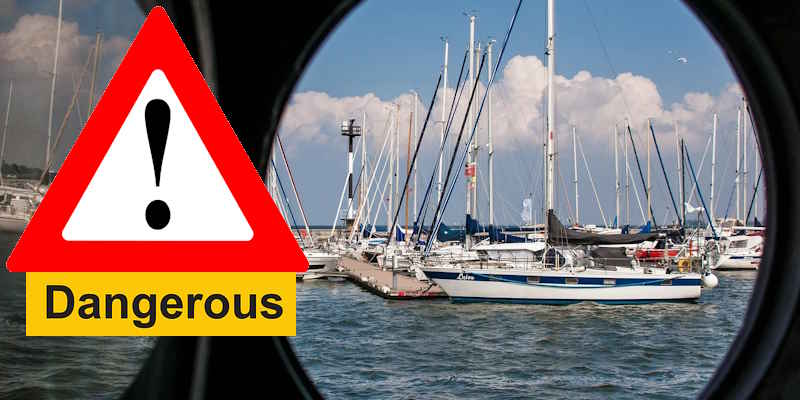Does your cruise itinerary include a port with a reputation for crime or safety risks? Instead of worrying, learn how to explore with confidence and caution!
Dangerous cruise ports can spark anxiety for even the most seasoned travelers—but don’t let that hold you back. The truth is, with the proper preparation, you can enjoy these destinations safely while soaking in their unique charm.
For this guide, I’ve dived deep into real cruisers’ reviews, news reports, and statistics to uncover the truth about the world’s most talked-about dangerous cruise destinations. You’ll learn how to stay safe in foreign ports, make smart choices, and turn potential risks into unforgettable experiences. Let’s get you ready for smooth sailing, no matter what the destination!
What Makes a Cruise Port Dangerous?
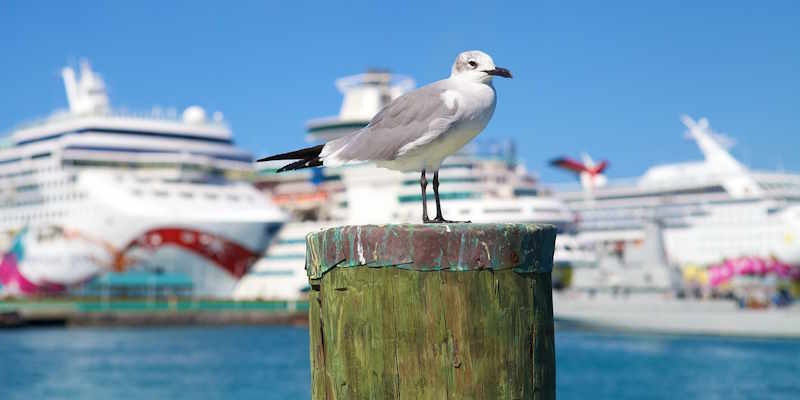
Several factors can make popular cruise ports dangerous. For example, petty theft and violent crimes pose significant risks to travelers. Political unrest and civil disturbances can lead to unpredictable and hazardous situations. Natural disasters like hurricanes and earthquakes, along with inadequate infrastructure or emergency services, can also affect port safety.
The fact is, cruise vacations are one of the safest ways to travel. Reports suggest that the odds of dying on a cruise ship are around 1 in 6.25 million—lower than the odds of dying from a bee sting. In general, staying safe in port involves common sense precautions—keeping valuables secure, staying in well-lit areas, and avoiding risky behavior to enjoy a safe and enjoyable cruise experience.
Usually, the further you venture from the cruise terminal, the riskier it gets in some destinations. You’ll also find that many Caribbean islands have tourist police to improve security and reduce safety concerns.
It’s vital to remember that cruise lines prioritize passenger safety and monitor port conditions. For example, cruise lines have a duty to warn passengers of the danger of crimes in port. Also, the cruise ship may miss a scheduled port due to severe weather or civil unrest.
The U.S. State Department issues four levels of warnings:
- Level 1: Exercise standard precautions
- Level 2: Exercise increased cautions
- Level 3: Reconsider travel
- Level 4: Do not travel
Top 16 Most Dangerous Cruise Ports
What are the most dangerous ports cruise ships visit? Here are 16 destinations where extra caution is advisable when going ashore.
Nassau, Bahamas
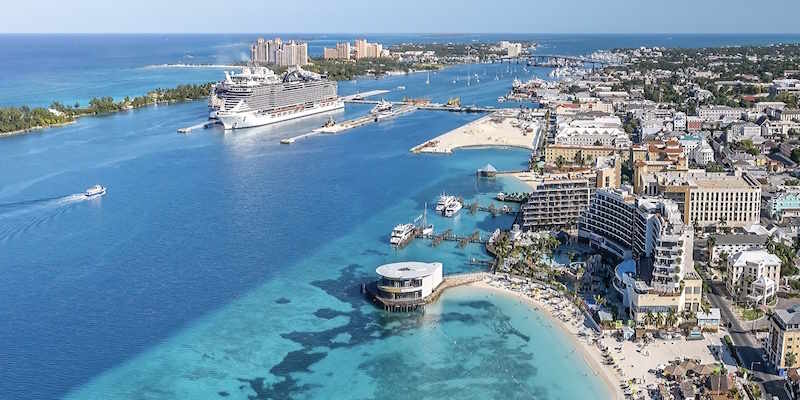
Nassau—the most popular cruise port in the Caribbean—is considered dangerous due to violent crimes like armed robberies and sexual assaults. The The U.S. Department of State warns that crime can occur in tourist and non-tourist areas. For cruise passengers, it’s vital to stick to popular tourist zones and never wander into unfamiliar neighborhoods.
Cruisers recommend sticking to cruise-organized excursions and keeping valuables out of sight. If exploring nearby stunning beaches or attractions in the town, stick to the main pathways and avoid interacting with the pushy vendors near the cruise terminal.
One traveler shared on Reddit that Nassau quickly feels unsafe once you leave the main tourist areas. Others suggest getting a day pass to Atlantis Paradise Island to feel completely safe.
Why not check out my guide to Nassau beaches to discover where to relax on the island?
Warning level: 2
Roatán, Honduras
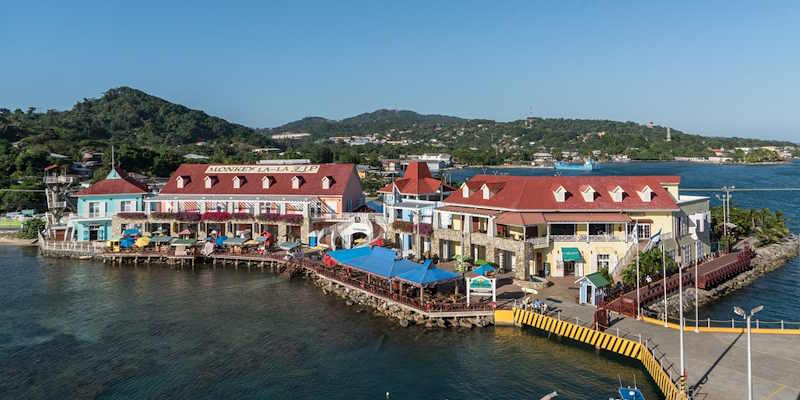
Honduras is considered a dangerous country due to high crime levels, including robbery, gun crime, and drugs. Despite its Level 3 travel status, Roatán remains a popular cruise destination for its crystal-clear waters, coral reefs, and laid-back vibe. It’s a top choice for snorkeling, diving, and beach enthusiasts looking for natural beauty.
Cruisers advise sticking to organized excursions and avoiding isolated areas, especially at night. One traveler reported being offered drugs and prostitutes near the cruise terminal. However, others note that there is a greater concentration of police in tourist areas.
If you’re exploring the island, stay in well-traveled areas like West Bay Beach for a safer experience.
Warning level: 3
Ocho Rios, Falmouth, and Montego Bay, Jamaica

Jamaica gets a bad rap in general due to its crime rate and poor health system. Also, the U.S. State Dept. reports that local law enforcement agencies are slow to respond to reports of criminal activity. However, the three main cruise ports in Jamaica remain popular destinations due to idyllic scenery and excursions to Dunn’s River Falls, beautiful beaches, and bamboo rafting.
Stories travelers share on cruise forums tell about getting heckled, feeling uneasy in certain areas, and rundown neighborhoods a few blocks from the cruise terminal. Also, it’s not an LGBTQA+ friendly place. For a relaxing, secure time ashore, many seasoned cruisers advise sticking to beach resorts or cruise-organized excursions.
To plan an eventful cruise day in Jamaica, check out my guides to Ocho Rios, Falmouth and Montego Bay.
Warning level: 3
Acapulco, Mexico
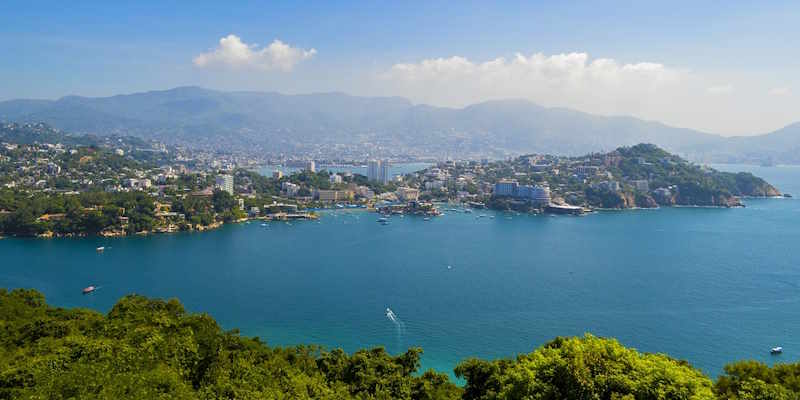
Acapulco—once a glamorous resort city—now grapples with high crime rates, including homicides and gang-related violence. However, reports indicate that criminal incidents rarely occur in the main tourist areas. Interestingly, the U.S. Government prohibits its employees to travel to Guerrero state, where Acapulco is located, due to crime.
Acapulco still attracts cruise ships due to its stunning beaches, rich cultural heritage, and natural beauty.
Due to crime rates, experienced travelers advise others to book shore excursions with trusted vendors, stick to resorts, and keep valuables out of sight. For example, one cruiser shared that tourists are just targets, and it’s vital to stick to the port area or organized tours.
Warning level: 4
Quintana Roo, Mexico
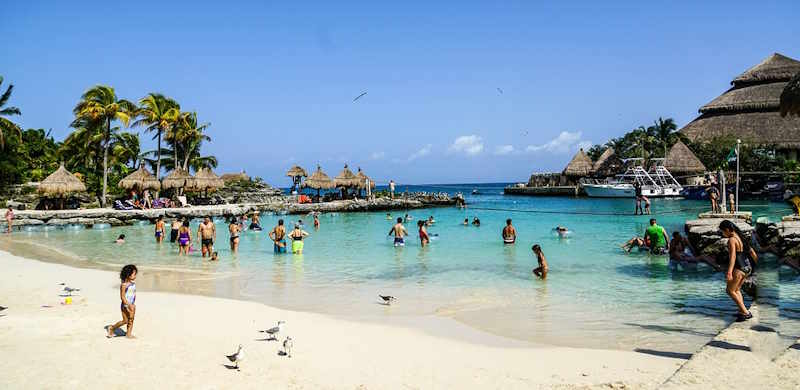
Quintana Roo is home to popular destinations like Playa del Carmen and Cancun. However, rising crime rates means that cruisers should exercise increased caution when ashore. Thankfully, cruisers who stick to popular tourist areas rarely become victims of crime.
Quintana Roo remains a top cruise port for its beautiful beaches and archaeological wonders like Tulum and Chichen Itza.
As usual, common sense dictates to be cautious of scams or overly persistent vendors. Reddit users also advise relying on cruise-organized excursions for added security and steering clear of bars where conflicts can escalate. For a stress-free visit, consider spending time at private beach resorts.
Warning level: 2
Belize City, Belize
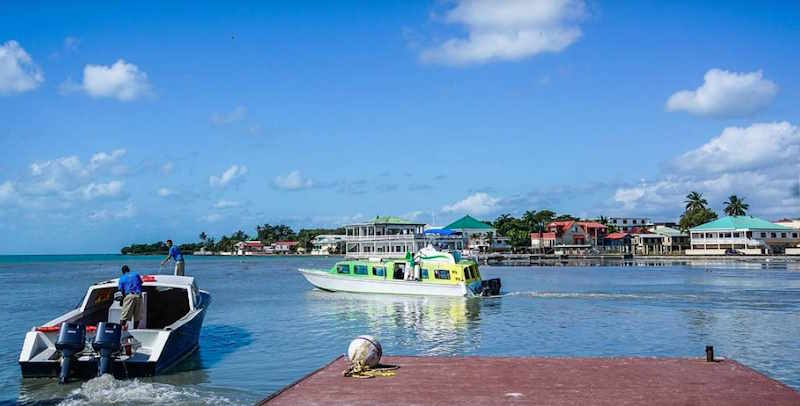
Belize City is a popular Central American cruise port despite having a reputation for violent criminal activity. The warning from the U.S. State Dept. is to exercise increased caution and remain vigilant. Some reports indicate frequent incidents of non-violent crimes—purse snatching, pickpocketing, and theft.
Tourists flock to Belize City to visit Mayan temples and ruins, cave tubing, ziplining, and rich cultural history. It’s also popular for snorkeling and diving at the Belize Barrier Reef.
Due to its Level 3 status, don’t venture outside the port area unless it’s an organized excursion. One traveler commented that the guards at the terminal gate with machine guns are a warning that it’s not safe.
Warning level: 3
Colon, Panama
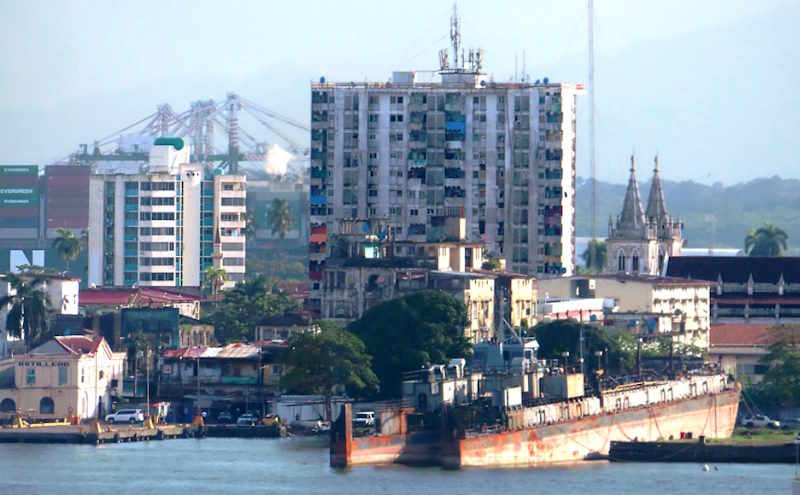
Safety concerns in Colon, Panama, have to do with crime and the potential for civil unrest. Even in tourist areas, pickpocketing and purse snatching are common. Also, political demonstrations can pose an increased safety risk for tourists. Travelers often describe the city as run-down, with trash in many areas.
To stay safe when leaving the ship, stick to tours organized by trusted operators. Many Reddit contributors warn against exploring the city independently, especially as there’s nothing much to see. Alternatively, you could use the cruise stop to stay on the ship and enjoy the onboard experience.
Warning level: 2
Barcelona, Spain

Despite being generally a safe city, Barcelona has a reputation for petty crime, especially during weekends, festivals, and holidays. Unfortunately, travel advisories say that thieves are prevalent in tourist areas. Think Las Ramblas, Barceloneta Beach, Sagrada Família Basilica, and public transport systems.
Interestingly, the U.S. State Dept. gives Spain a travel warning Level 2 due to threats of terrorism and civil unrest. Also, areas like Catalonia, where Barcelona is located, can suffer from water shortages.
Cruisers comment that Barcelona doesn’t feel like a dangerous city. However, you must keep personal belongings—mobile phones, credit cards, and ID—in a secure pocket or crossover bag. Also, be aware of your surroundings, especially in large crowds.
Warning level: 2
Santo Domingo, Dominican Republic
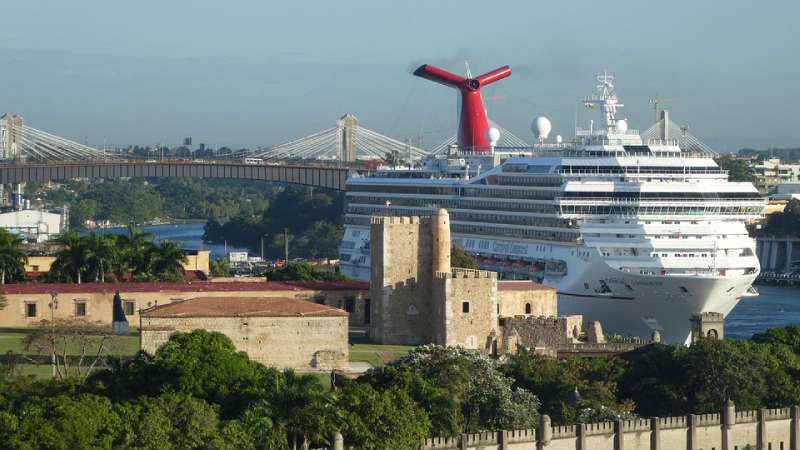
Santo Domingo in the Dominican Republic gets a poor rap from cruisers due to safety concerns and a lack of facilities near the cruise terminal. The U.S. Travel Advisory warns that sexual assault, armed robbery, drugs, and homicide are common. Cruisers report seeing armed guards at every intersection up to a mile from the port.
Despite its reputation for violence and crime, Santo Domingo remains a popular stop on Caribbean cruises. The city offers rich history and culture, with attractions like the Colonial Zone, a UNESCO World Heritage site, drawing cruise passengers seeking authentic experiences.
As usual in dangerous ports, stick to cruise-organized excursions and well-trafficked tourist areas.
Warning level: 2
San Juan, Puerto Rico
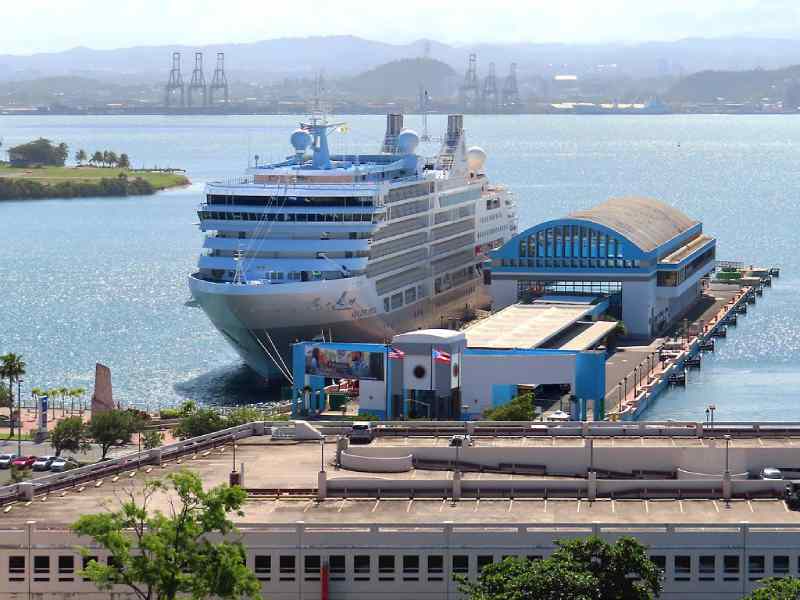
San Juan, Puerto Rico, is generally safe if you stick to well-trafficked tourist zones. The primary safety concerns in the city are petty crimes like pickpocketing and pesky vendors. However, the cobblestone streets, centuries-old forts, and vibrant culture are a stone’s throw from the cruise terminal and safe for walking.
Cruise passengers report that tourist scams are common in San Juan. These include taxi and car rental scams as well as fake tour guides. Also, strong tides and rip currents make some of the beaches unsafe for swimming. The walking tour of San Juan from the cruise terminal is generally safe for travelers.
Here are the best ideas about how to spend a peaceful day in San Juan.
Warning level: no specific travel warnings
Cozumel, Mexico

Although Cozumel is safe to visit, you must be careful about non-violent crimes like pickpocketing outside of the port and tourist areas. And compared to Mexico’s mainland, it’s one of the safer cruise destinations. Therefore, most cruisers on forums like Cruise Critic recommend leaving valuables on the cruise ship, keeping your phone and credit cards in a safe place, and staying sober.
Find out what to do in Cozumel on a cruise day in port, the best beaches in Cozumel and the best restaurants near the cruise port.
Warning level: no specific travel warnings
Port-au-Prince, Haiti
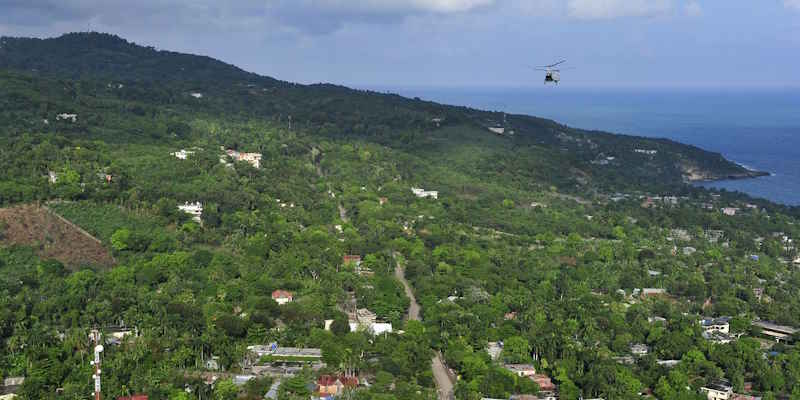
Port-au-Prince has a reputation as one of the most dangerous ports in the world. So, it’s no surprise that the U.S. State Dept gives it a Level 4—do not travel—rating. Causes for concern include high murder rates, kidnapping, civil unrest, robbery, sexual assault, and protests.
Does your cruise itinerary include Haiti as one of its ports of call? If so, don’t worry. The chances are you’ll dock at Labadee—a private, secluded part of the island rented by Royal Caribbean. It’s 128 miles from Port-au-Prince and protected from the troubles that plague Haiti.
Labadee Port is described as one of the most beautiful cruise destinations in the Caribbean. Here, you’ll find coral reefs, pristine sands, lagoon bays, and jungle-covered hilltops. It also has a half-mile-long zipline over the ocean.
Warning level: 4 (for Haiti, not Labadee)
Cartagena, Colombia
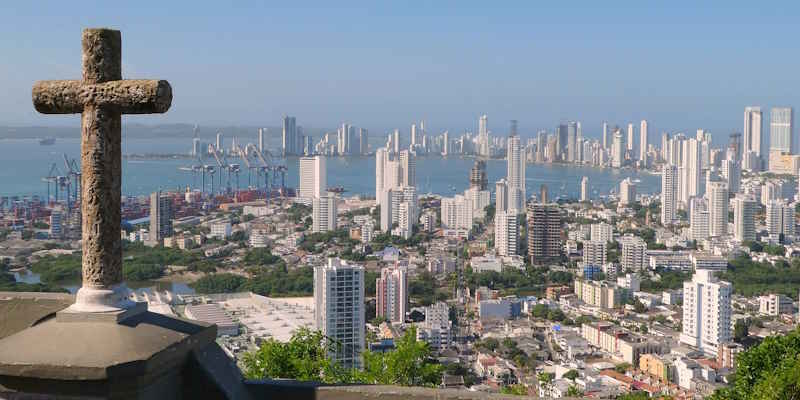
While Cartagena is generally safer than other Colombian cities, you should remain cautious in tourist areas due to petty theft and occasional tourist scams. Many cruisers advise taking shore excursions to explore the city and surrounding areas. The city’s historic Old Town is a beautiful UNESCO World Heritage site offering a rich cultural experience.
The best advice is to stay in groups within the walled city and popular tourist areas. Unlike the rest of Colombia, Cartagena is safe for tourists.
Warning level: 3 (for Colombia, not Cartagena)
Alexandria, Egypt
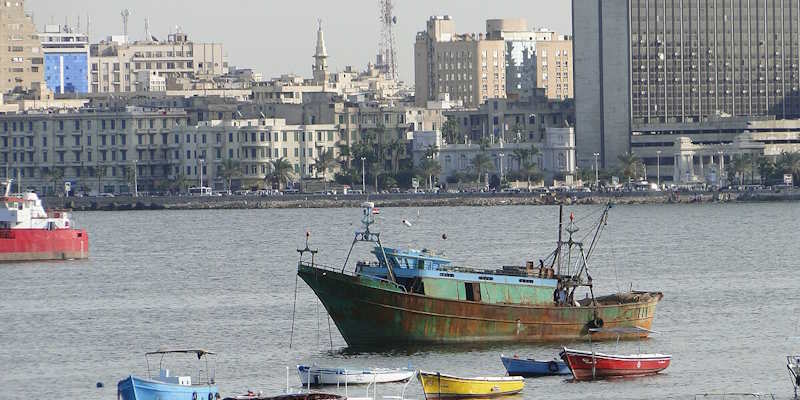
Alexandria is a popular cruise destination in Egypt. Safety concerns in the country are political instability and street crime. The online consensus of most cruisers is to book a cruise-operated tour or stay in the port area. It’s not uncommon for armed guards to escort organized shore excursions.
Despite the risks, Alexandria remains a captivating cruise destination. Shore excursions include iconic landmarks like the Bibliotheca Alexandrina and the ancient Catacombs of Kom El Shoqafa. Its Mediterranean charm and historical depth continue to attract adventurous travelers.
Women cruisers visiting Egypt should opt for loose-fitting, modest clothing to respect local customs and avoid unwanted attention. Tight or revealing attire can draw unnecessary focus and increase safety risks.
Warning level: 3
Misconceptions About Cruise Port Safety
Many cruisers mistakenly assume that all ports are safe simply because they’re included in the itinerary. Risks can occur any time, day or night, and even popular tourist spots can attract petty criminals. Stay alert and prioritize safety, no matter how picturesque the destination.
How Cruise Lines Deal with High-Crime Ports
Cruise lines are well aware of safety concerns at certain ports and have implemented measures to protect passengers. One growing trend is the development of private islands and exclusive resorts like Royal Caribbean’s CocoCay or Disney’s Castaway Cay. This way, you can enjoy time ashore without worrying about local crime rates and pushy vendors.
Collaboration with local authorities is another key strategy. Cruise companies work to secure port areas by employing additional security, vetting local vendors, and monitoring conditions closely. Onboard, the crew usually provides enhanced safety briefings, warning them about specific risks.
Staying Safe in Risky Ports
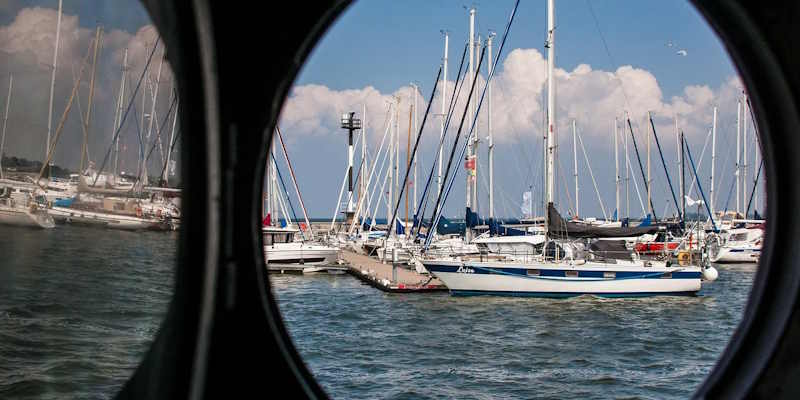
Staying safe onshore on a cruise usually involves common sense actions. As a general rule, the farther you venture from the port, the sketchier the areas become. Here are a few top tips to keep you safe on your cruise adventure:
- Research the port: Review government advisories and traveler reviews.
- Stay in tourist-friendly areas: Stick to well-trafficked zones and avoid venturing into unfamiliar neighborhoods.
- Use trusted transport: Avoid unlicensed taxis or transport options. Stick to those recommended by your cruise line or tour operators.
- Book excursions through the cruise line: These are vetted for safety and reliability.
- Secure your belongings: Keep valuables hidden, carry limited cash, and consider using a money belt. Leave expensive jewelry on the ship.
- Be vigilant: Trust your instincts and avoid risky situations. If something feels off, remove yourself quickly.
- Use technology: Download safety alert apps to stay informed about real-time conditions in the area.
Use these tips to stay prepared when going ashore so you can have peace of mind and avoid anything that spoils your cruise experience.
My Final Thoughts
Travel smart, not scared! A cruise vacation is a fantastic way to explore the world and experience different cultures. But knowing the risky ports on your cruise itinerary can make all the difference. Wishing you happy and safe travels on your next cruise.
Related articles:

